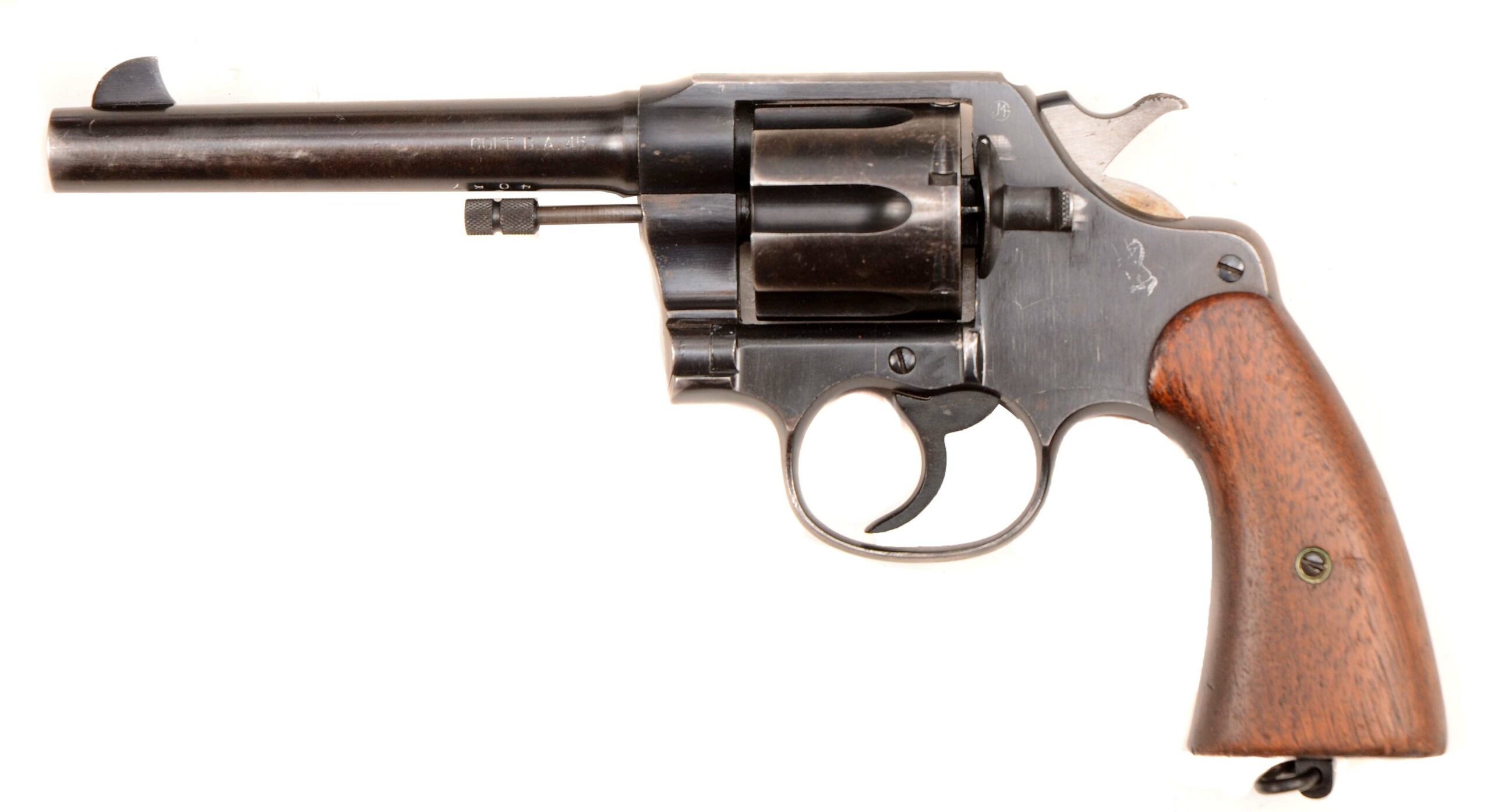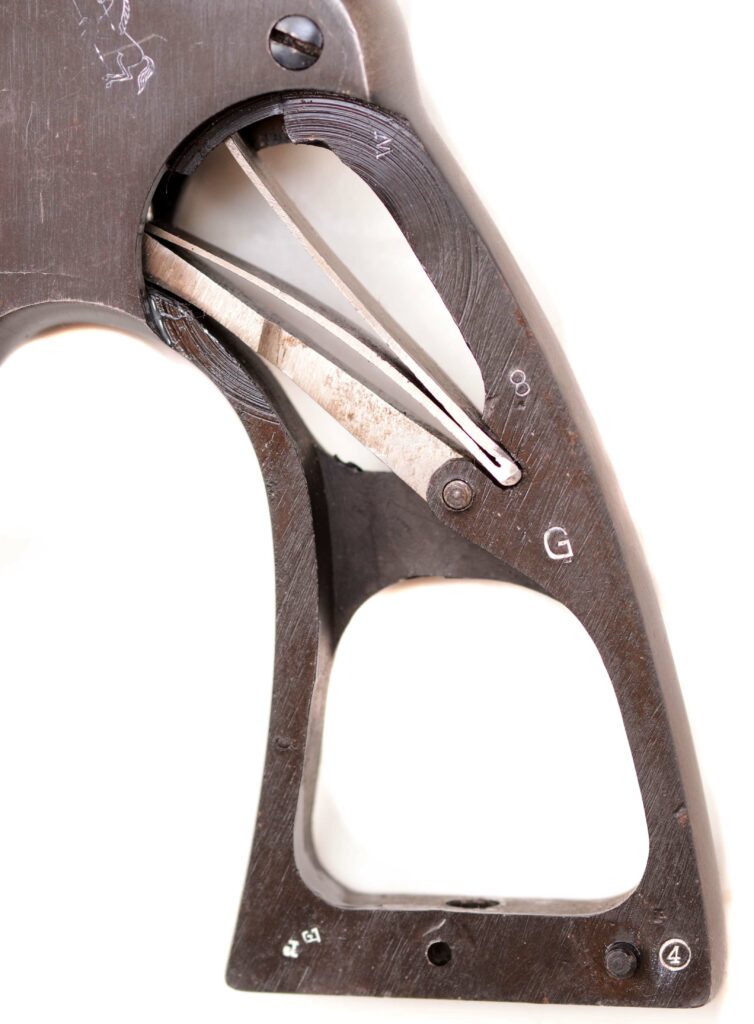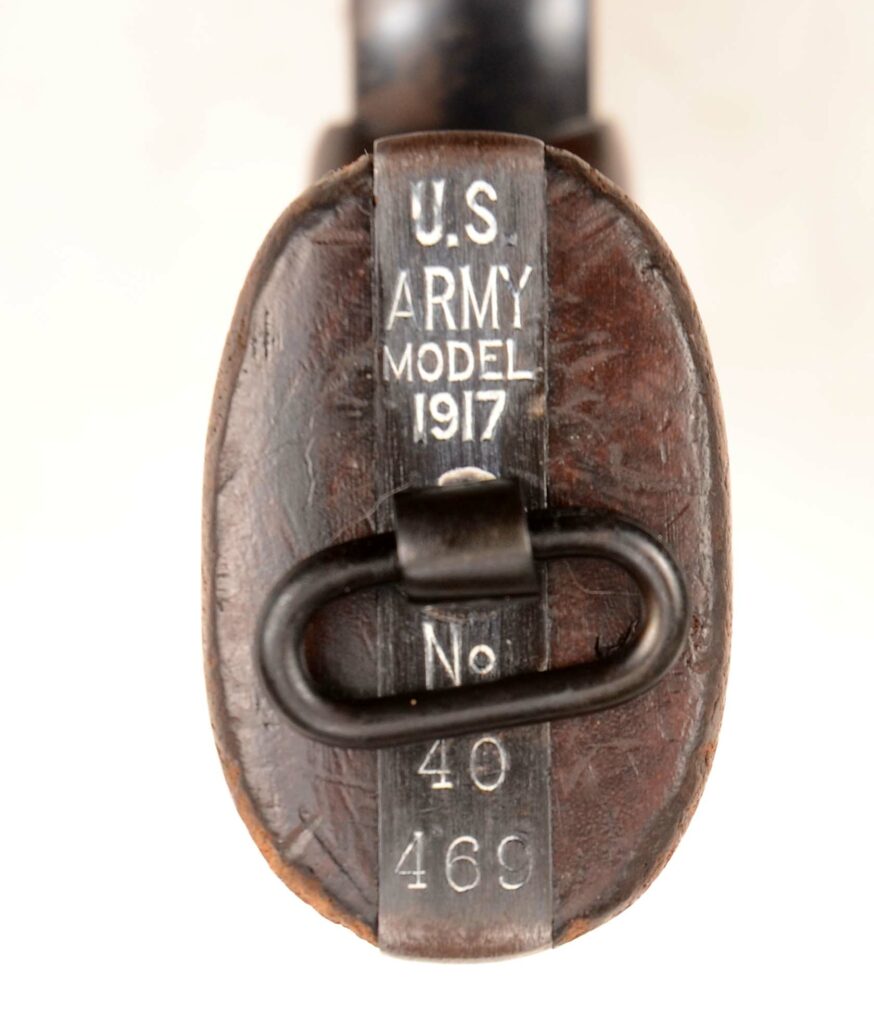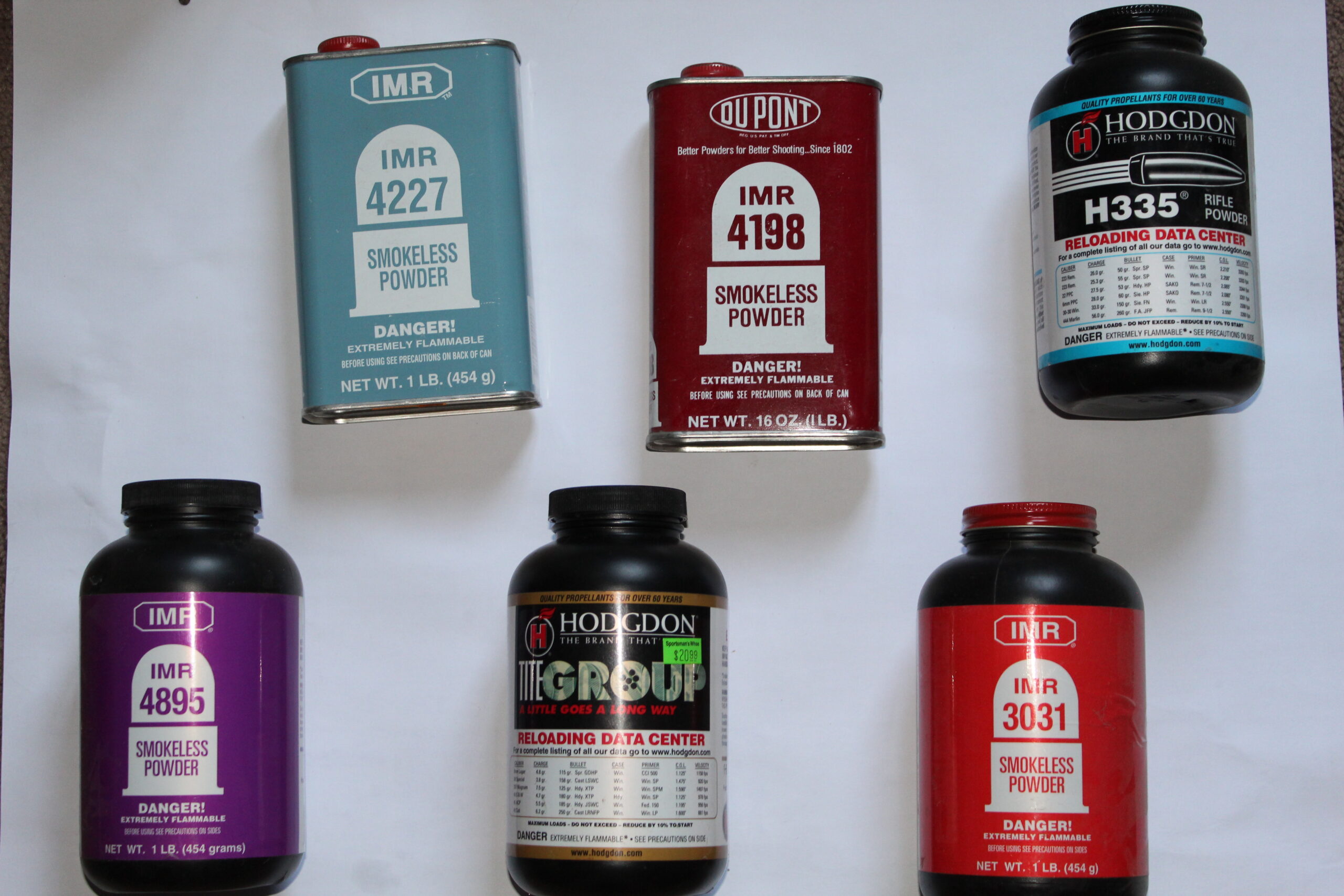Early production Colt Model 1917 revolver with serial number 194303.
By Frank Iannamico
The history, use and details of revolvers fielded by the military have often been overshadowed by their semiautomatic counterparts. However, the revolver served in relatively large numbers in both World War I and World War II.
When the United States entered World War I in April 1917, the standard handgun for the U.S. Army and Navy was John Browning’s .45 caliber 1911 semiautomatic pistol. Inadequate supplies of the 1911 pistol resulted in contracts being awarded to Colt and Smith & Wesson (S&W) to manufacture .45 caliber revolvers to supplement the standard 1911 pistol. The Colt and S&W designs are totally different; only the caliber is the same.
Contract discussions began in the spring of 1917, but due to a lack of funding, Colt’s contract was not let until October of that year.
.45 Caliber
The Army’s experience in fighting during the Moro Rebellion of 1899 in the Philippine Islands revealed that the standard-issue, .38 Long Colt (LC) caliber Colt Model 1892 service revolvers lacked adequate stopping power against a determined enemy. As a direct result, the .38 caliber M1892 revolver was replaced by the .45 caliber M1909 Colt New Service revolver. The Colt M1909 New Service revolver was chambered for the rimmed .45 LC caliber cartridge, not the .45 ACP (Automatic Colt Pistol) round adopted in 1911.
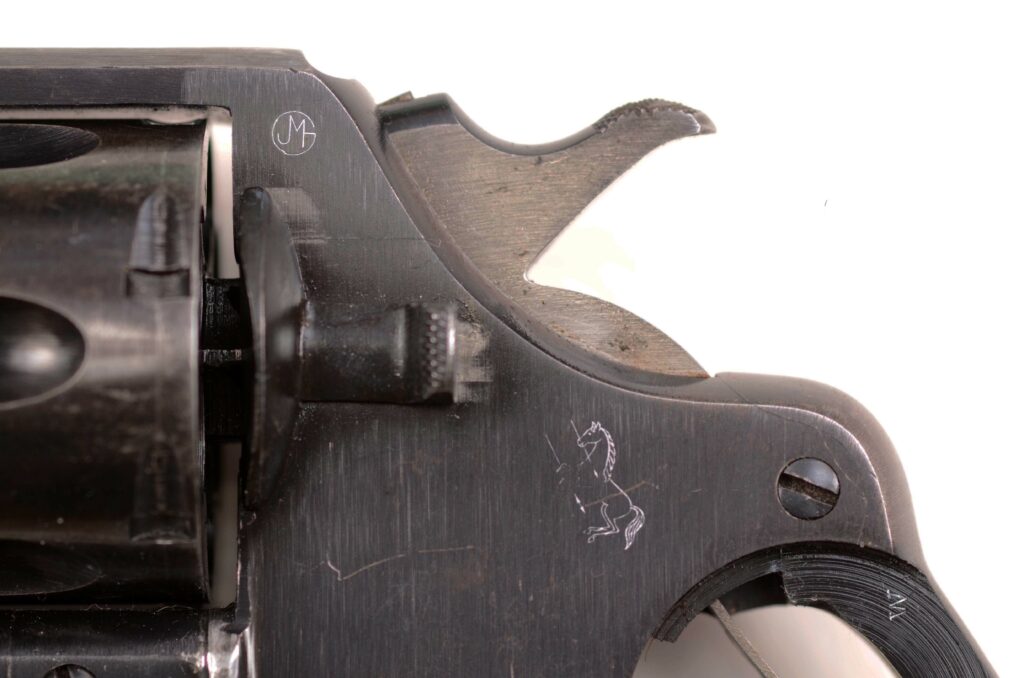
The Model 1917 Colt Revolver
Colt’s M1909 New Service revolver’s basic design was modified for the .45 ACP cartridge by implementing a wider cylinder stop lug to keep the cylinder in place when the cylinder was swung out to load as well as a tapered barrel. A shorter cylinder was designed to allow use of the half-moon clips designed by Smith & Wesson for their 1917 revolver. The cylinders on early Colt 1917 revolvers were drilled straight through, lacking head-spacing shoulders. Consequently, the Colt model could only fire rimless .45 ACP rounds mounted in the half-moon clips. The Army directed Colt to design cylinders with head-spacing shoulders, thus allowing .45 ACP cartridges to be chambered and fired without clips, if needed, but each spent case had to be individually ejected with a cleaning rod or similar tool. The U.S. Colt Model 1917 was a six-shot, double-action, large frame revolver.
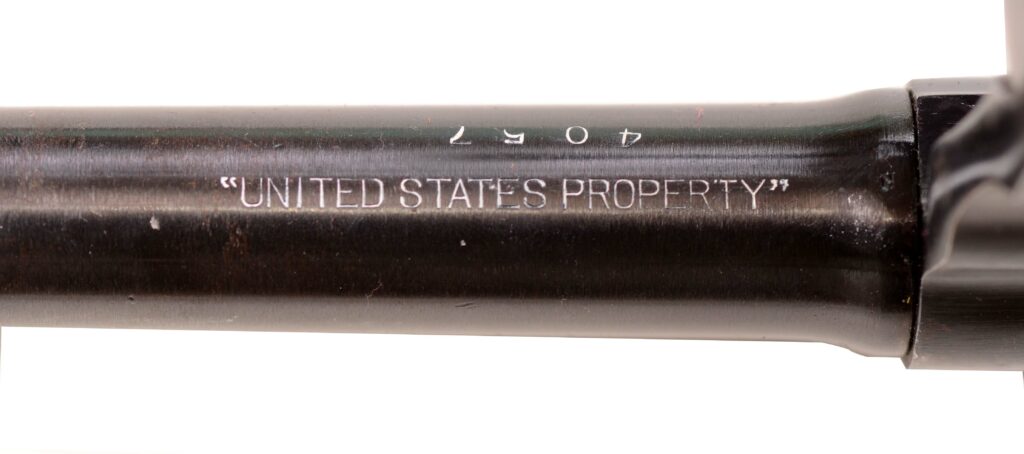
The number of Colt 1917 revolvers procured was reported as 154,802. In addition to the Army and Navy, a small number of the revolvers were issued to U.S. government agencies, including the U.S. Post Office, the Justice Department, the Treasury Department and others. The original contract (R32/14984-R32) price with two half-moon clips was $14.00 per revolver. A later contract had a revised price of $19.00 each. After World War I ended, Colt’s contract was suspended in December 1918. The last 1917 Colt revolver was delivered during February 1919.
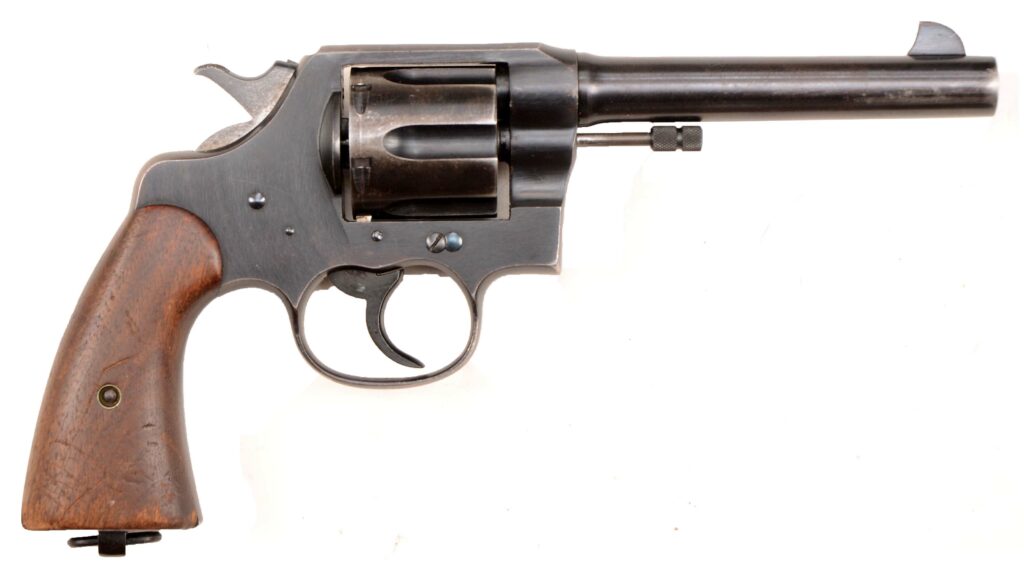
The .45 ACP Colt M1917 military revolvers have a 5.5-inch barrel, with 6-grooves and a left-hand twist of one turn in 16-inches. The revolver’s overall length is 10.8 inches, weighs 2 pounds, 7 ounces and is slightly heavier than its S&W counterpart. Its original finish was a low-luster blue with smooth walnut grips.
The serial numbers were marked on the frame under the yoke and written on the inside of the grips in pencil. The butt of the weapons was marked, “U.S. Army Model 1917” and a number that is different from the Colt factory serial number.
The left side of the barrel was roll marked, “COLT D.A. 45.” The top of the barrel was marked, “COLT’S PT F.A. MFG. CO. HARTFORD, CT U.S.A. PAT’D AUG 5, 1884 JUNE 5, 1900 JULY 4, 1905.” (Note a number of replacement barrels were manufactured at the Springfield Armory). The bottom of the barrel was roll marked, “UNITED STATES PROPERTY.” There were several variations of the property markings that used different fonts and one without quotation marks. The VP (Verified Proof) common on Colt commercial firearms was not used on military contract revolvers. The trademark “Rampant Colt” was roll marked on the left side of the frame.
Note: The factory serial number on the Colt-manufactured U.S. Army Model of 1917 is stamped on the frame. A different, non-matching, number is stamped on the butt; it is not the Colt serial number, but a government control number. However, the number stamped on the butt of the Smith & Wesson military M1917 revolver is the weapon’s factory serial number.
Military Acceptance and Proof Markings
Various components and assemblies were inspected prior to those parts being assembled into a completed revolver. Individual parts that passed were given a provisional inspection mark. Provisional inspection markings were stamped on the frame under the yoke, back of the cylinder and on the underside of the barrel. On Colt revolvers, the provisional inspection mark was the letter “H” representing Francis Hosmer, assistant inspector at the Colt factory. Other factory inspection markings were stamped on the frame under the grips.
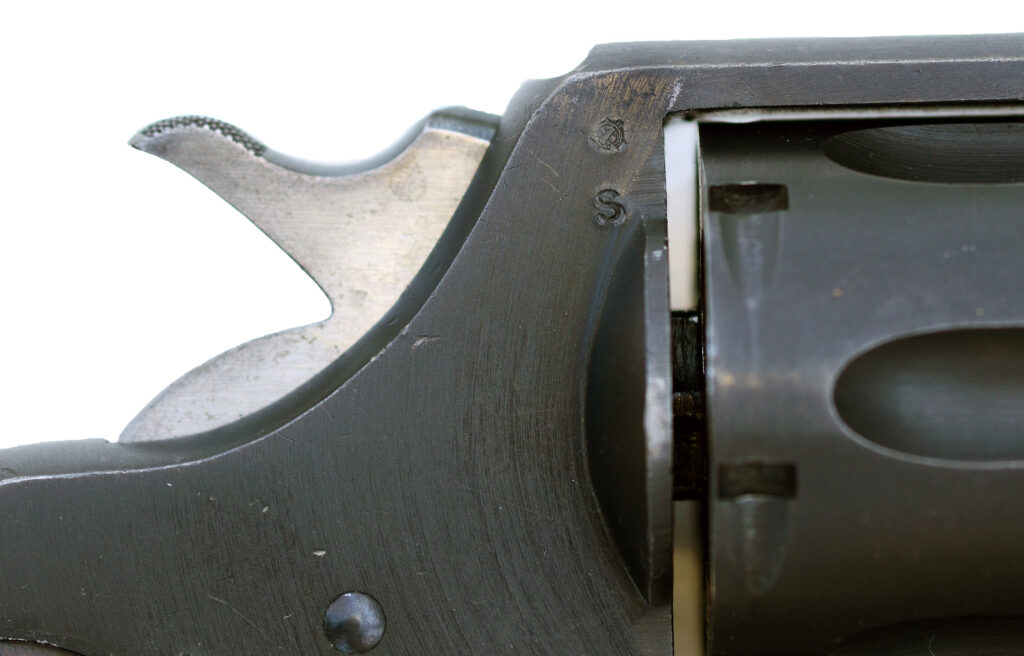
Markings on the right side of revolver serial number 242695 include the Ordnance Wheel and the letter “S” of Inspector Gilbert H. Stewart.
The acceptance stamp used until February 1918 was that of Army Inspector of Ordnance (AIO) Officer Gilbert H. Stewart. His initials “GHS” were superimposed in a circle located on the upper left side of the frame. In later production, to approximately May 1918, the initials of AIO Army Officer John M. Gibert , “JMG,” were marked on the upper left side of the weapon, with the G encircling the letters “JM.” Later stamps were an eagle’s head with letter codes beneath it, the most common being “S20.” The AIO stamp indicated that the completed weapon inspected was being accepted on behalf of the U.S. government.
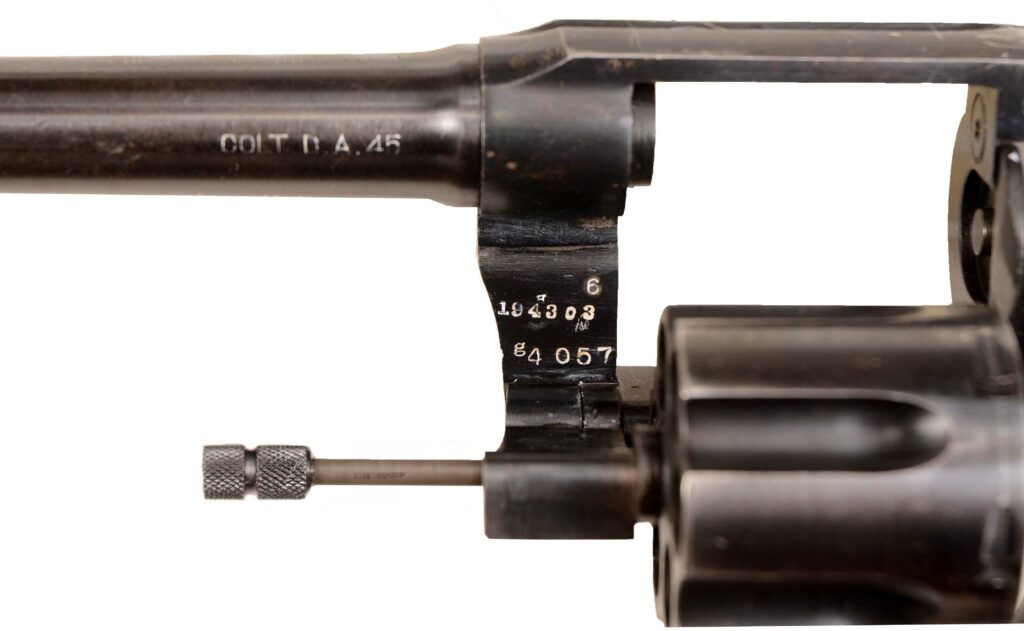
The 1917 Colt revolvers were procured, and inspected, by U.S. Springfield Armory personnel. Revolvers were function-fired with six rounds—three in single action and three in double action. Weapons were fired for accuracy on a 15-yard range. A revolver was randomly selected from each lot for endurance testing with 2,000 rounds of standard ball ammunition. After testing, the weapons were cleaned, oiled and packed for shipment.
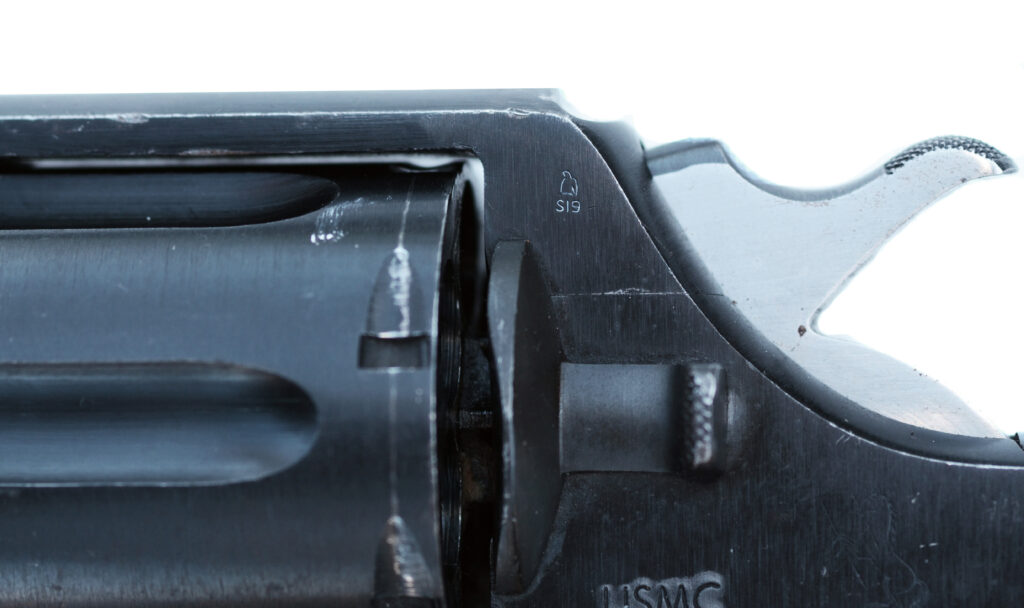
Later production, Colt revolvers were marked with a code under the eagle’s head in place of the Army inspector of ordnance’s initials. The cartouche indicates final inspection and government acceptance. This one on serial number 223806 is S19; this weapon was also USMC property marked.
Other markings that may appear on military weapons were those added when a weapon was sent to the factory or a government arsenal to be rebuilt. If rebuilt at an arsenal located in the U.S., the initials of that facility were stamped onto the right side of the frame. Generally, the facility involved in the rebuild of Colt revolvers was the Springfield Armory using the letters “SA” or the Rock Island Arsenal using “RIA.” In some cases, the Ordnance “flaming bomb” or “wheel” were applied to signify that the weapon passed inspection after being rebuilt.
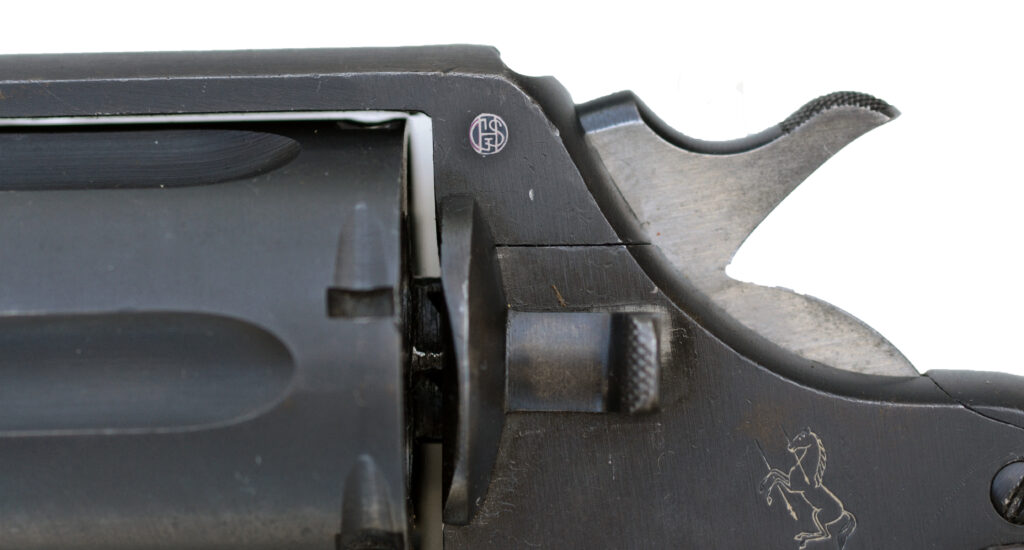
After World War I ended, the revolvers saw use by military police units. Most were returned to military arsenals or the manufacturer for repair or rebuild before being placed in storage. The Springfield Armory performed most of the work.
During 1941, prior to the U.S. entering World War II, the 1917 revolvers remaining in military storage were planned to be issued only in the continental U.S. However, the .45 caliber revolvers were issued to military police units serving in the European and Pacific Theaters. When World War II ended in 1945, there were a reported 96,530 Colt Model 1917 revolvers returned for storage, 27 to 28 years after they first entered service. After the War ended with adequate supplies of 1911 and 1911A1 pistols, the revolvers were to be classified as obsolete, but the Provost Marshall disagreed, saying that the revolvers were well-suited for military police work, so they remained in service up until the Vietnam era. Today, the old war horses are over 100 years old and a cherished collector’s item, many still functioning as an occasional shooter.
| This article first appeared in Small Arms Review V24N10 (December 2020) |



